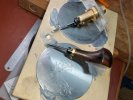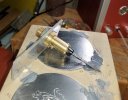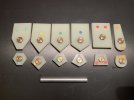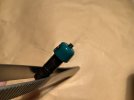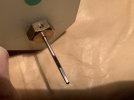Pešekan
Member
Yes, I realize that now, thanks.It's a clone of the Jura Artgraver...
I'm at a very early stage of getting to know hand engraving and all the different machines and styles, but i learn new things every day.
I have sent a private message to x9abm regarding some of the newer dilemmas I have, but i guess i can post them here as well, to get more mysteries solved
I know we have touched some of these topics earlier in the posts, as well as that there are similar topics all around this forum, but I just can't figure out the right information I need, and I don't want to waste my money on equipment I won't use so please bear with me
I have a few more beginner questions regarding this ArtGraver for which i would really appreciate the answers because i can't wait to get one of my own
1. Which gravers do you get with the machine? I have seen in an unpacking video that you get 2 sets of 6 gravers. Are they carbon steel or HSS? Also, can you name which ones are in the set (square, flat, round etc) so i can see if i need to order any other for my beginner testings?
2. Also, speaking of the gravers, which dimensions does this hand piece use? I'm a bit confused with all the available sizes and shapes of the gravers, so i wouldn't like to waste money on gravers that i cannot use. A link to an example graver that i can use would be great (you said it uses 4.5mm gravers?)
3. Sharpening. The most important but also the most confusing part for a beginner. Dual angle GRS is just too expensive for me, even though as far as I have researched, it is the best for getting all the various geometries
Which next cheaper tool do you suggest because I realize that sharp gravers are the No.1 aspect of this art. Lindsay templates sound interesting, but there are so many of them, i don't have a slightest clue which ones to get.
Or is there maybe some cheaper dual angle sharpener than the GRS one? Crocker sharpener? Or something like the one below, what do you suggest?
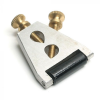
4. Sharpening stones / discs - I think there are no doubts here, for resharpening purposes 1000 and 2000 grits should be fine?
5. Ball vise - i plan to start learning engraving on zippo lighters and scrap knives. I plan to use the vise in combination with the Thermomorph plastic. Do you think 2kg ball vise will do just fine, or the bigger 10kg one is a must?
Thank you very much for the answers



